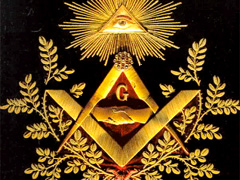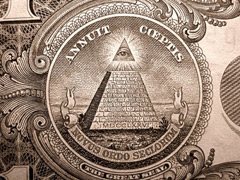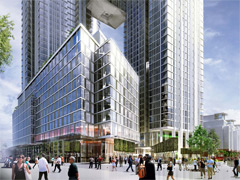


How did it all start?
There are several theories about the origins of the Freemasons. One is that it all began with a group of stonemasons who worked on King Solomon’s temple in Jerusalem, in 967 BC. The most accepted version of events is that the group was formed by stonemasons who worked on castles and cathedrals in the medieval era. There were two groups: rough masons who worked with ordinary stone, and free stone masons who used softer materials and created more delicate designs. The latter group formed a guild, and differentiated themselves from other stone masons by making up their own set of practices and protocols.
So Freemasons are manual workers?
Not at all, in 1646 they started accepting men who were not stonemasons into the group, usually those of specific social standing and wealth, such as aristocrats and intellectuals.
The very first Grand Lodge was built at St. Paul’s in 1717, and the first rule book, containing a code of conduct, was issued shortly after, one which is still in use to this day with instructions like “you agree to obey the moral law” and “be loyal to your lodge”.
A second Grand Lodge was set up in 1751, and after much rivalry the two united in 1813 to form the United Grand Lodge of England (UGLE). Throughout the 19th century Freemasonry spread to countries belonging to the British Empire; by 1900 there were nearly 3000 lodges around the world.
The aftermath of both World Wars saw many new lodges form, as a sense of “brotherhood” was needed after the two catastrophes. Historically Freemasons have not admitted women, however there are now two separate lodges for women in Britain, with their own powers of administration.
\n\nSo they’re a worldwide phenomenon?
Yep, there are 6 million Freemasons around the world today, with 250,000 in England and Wales. There are lodges on every continent with the exception of Antartica, as far as Yokohama in Japan and Sabah in East Malaysia.
In London the Museum of Freemasonry on Great Queen Street is where the headquarters of the UGLE are. It was built in 1933 and is a Grade II art deco building with stunning glasswork inside. This is where meetings take place but there are other lodges in the capital, such as the Tergere in the City and the Chelsea lodge, patronised by members of the entertainment industry such as Rick Wakeman.
Is it a top secret elitist organisation?
Not according to them, as any male over the age of 21 can join irrespective of race, colour, status, political views or religion - although one of the criteria for joining is that members must have a religious belief, and the Tanakh, the Bible and the Koran are used in Masonic meetings, depending on the state where they are based. They also claim that they “pride themselves on their transparency”, promote morality and tolerance, and are the biggest charity fundraisers in the UK after the National Lottery, raising around £30 million a year.
That sounds rather appealing
It does in theory, but there are hefty (undisclosed) fees to join, and members are also expected to donate large amounts of money to go towards charity. To be admitted, two sponsor recommendations are needed, and a vote then decides whether the candidate is successful. So to become a member you need to be considerably wealthy and have connections within, add to that the secrecy surrounding the organisation and you can see how conspiracy theories start flying around.
\n\nWhat do the Masonic symbols mean?
Some common ones include the Masonic eye, which is the all seeing eye of God. This appears on US $1 notes, which has led conspiracy theorists to believe that the Masons, like the Illuminati, run the world. The skull and cross bones, also known as the memento mori, is a reminder of mortality.
The set square and compass are architect tools; the set square measures angles between finite squares, representing the material, while the compass draws circles, which stand for eternity and spirituality. The chequerboard floor references the floor of King Solomon’s temple, and was also
a feature of Egyptian temples in Ancient times.
The inverted pentagram is one of the more controversial ones, as this symbol is commonly associated with Satanism. There are various theories as to its ties with Masonic imagery, one particularly abstract one being that it refers to the five senses relating to the fraternity between members, i.e. the sense of touch in the handshake, sight for reading Masonic signs, etc.
Are there any famous Freemasons?
Plenty; five British kings have been Freemasons, the most recent being King George VI, and currently Prince Michael of Kent is the Grand Master of the United Grand Lodge of England, the highest position in the country. Winston Churchill was also a high ranking freemason. In the arts some notable names include Mozart, William Hogarth, Sir Arthur Conan Doyle, Rudyard Kipling, Sir. John Soane, Oliver Hardy, Nat King Cole and Peter Sellers. Scientist Sir Alexander Fleming, explorer Sir Richard Burton, Dr Barnardo and magician Harry Houdini were also part of the brotherhood. Nowadays public figures prefer not to make it known that they are linked to the organisation because of its negative connotations, so unconfirmed rumours abound, such as the one about Bill Clinton being a Freemason. On the other hand Jim Davidson was a proud member till his resignation in 2002, an advert for not joining a secret society if ever there was one, although a brilliant one for the Freemasons’ rep, as Davidson left after offending members with his “colourful” jokes.


